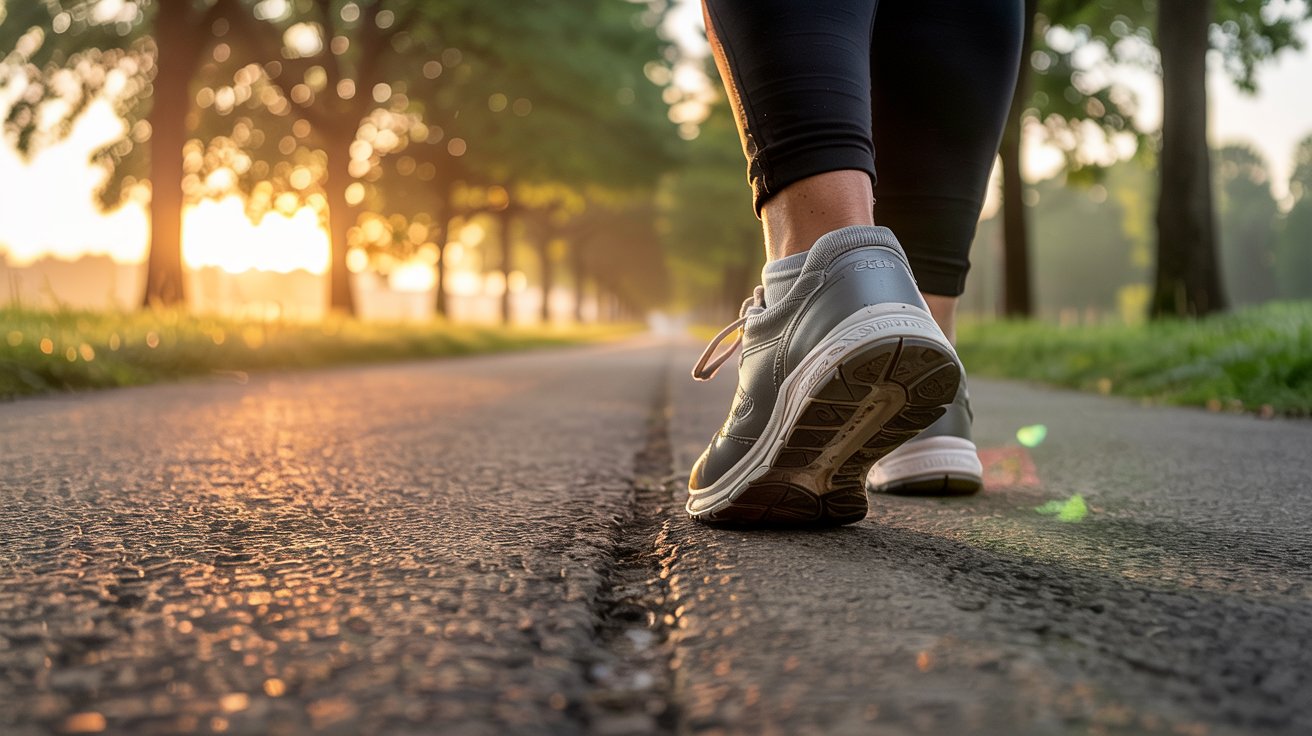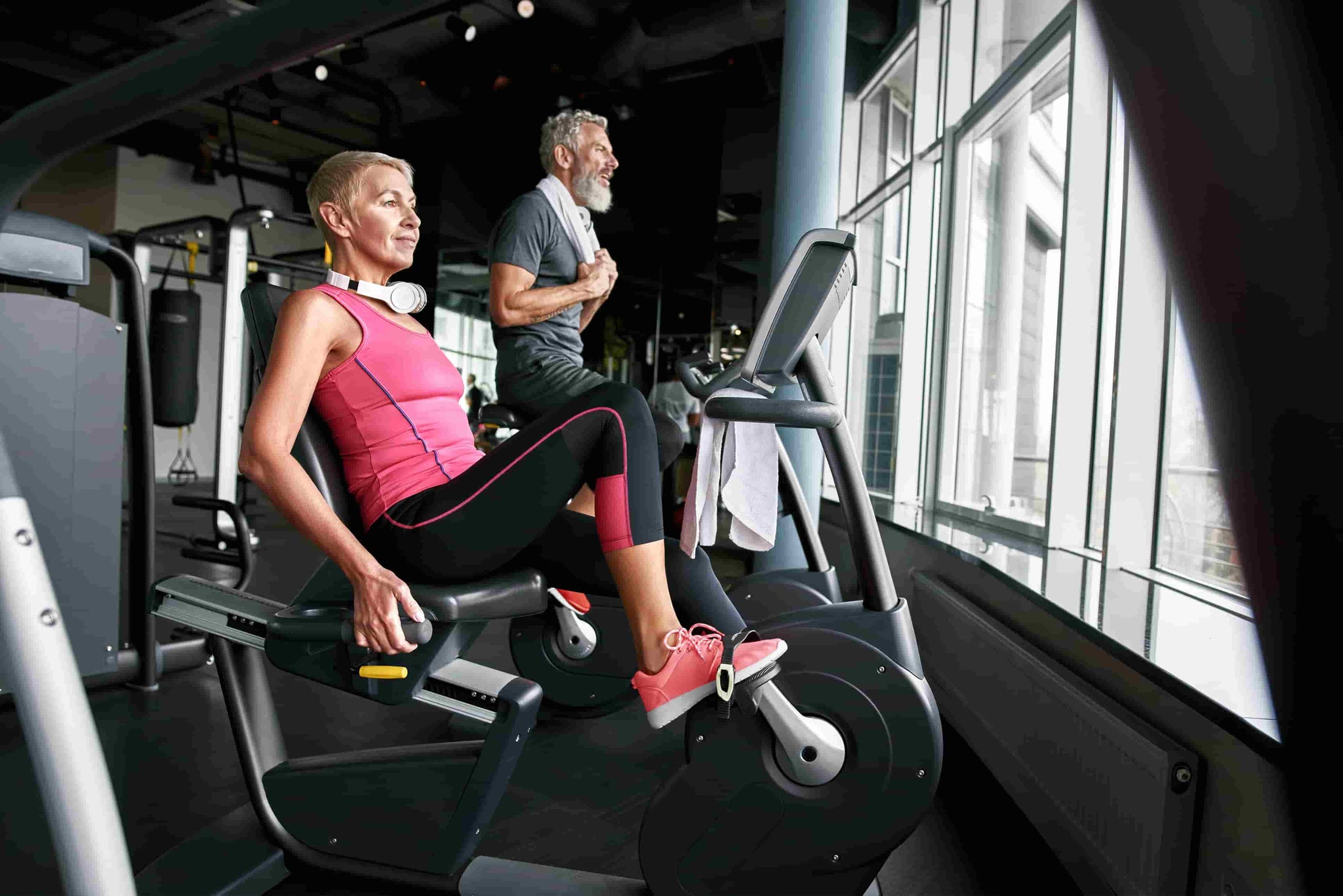Recumbent Bike vs Walking: Which is Better?
Written by: Vanswe Fitness
Published on: April 12, 2025. Last updated: May 09, 2025

Recumbent biking and walking are both excellent low-impact cardio options, but the better choice depends on your needs. If you want to burn more calories with less joint strain, a recumbent bike is better. If you prefer outdoor movement and bone health benefits, walking wins. For most people, a mix of both works best.

Is Riding a Recumbent Bike as Good as Walking?
Yes, riding a recumbent bike can be just as good as walking, and in some cases even better. According to the ACTI-Cités Project (Menai et al., 2018, PMID: 29929198) [1], recumbent bike offers similar cardiovascular benefits while putting less stress on the joints, making it ideal for people with knee or back issues. It also burns more calories in less time at moderate to high intensity.
Recumbent Bike: Thee indoor cycling machine features a reclined seat with back support, offering a laid-back position that reduces pressure on your lower back and knees. It’s ideal for people who prefer indoor workouts or need extra joint support.
Walking: The most natural form of movement. You can walk indoors or outdoors, during your commute, or simply while catching up with a friend. All you need is a good pair of shoes.
In short, walking is flexible and universally accessible, while a recumbent bike offers ergonomic support and indoor convenience.
What Burns More Calories Walking or Biking?
According to a 2018 study titled "Cycling efficiency and energy cost of walking in young and older adults" [2], recumbent biking generally burns more calories than walking, especially at moderate to high intensity.
Let’s compare how many calories a 150-pound person can burn in 30 minutes of activity:
| Intensity | Recumbent Biking (calories) | Walking (calories) |
|---|---|---|
| Light | ~240 (10-11.9 mph) | ~154 (3.5 mph) |
| Moderate | ~285 (12-13.9 mph) | ~179 (4.0 mph) |
| High | ~357 (14-15.9 mph) | ~250 (4.5 mph) |
If you’re short on time and looking to burn more calories, the recumbent bike has the edge. It provides higher calorie expenditure across all intensity levels compared to walking.
Related Article: Recumbent Bike for Weight Loss: Why You're Not Dropping Pounds
How Many Miles on a Stationary Bike Equals 10,000 Steps
If you’re tracking your activity with a step counter, it’s helpful to know how those steps translate into miles. On average, 2,000 steps equal about 1 mile, though this can vary slightly based on your stride length. Therefore, 10,000 steps is approximately equal to 5 miles. Here’s a quick reference guide:
| Steps | Approx. Miles |
|---|---|
| 1,000 | 0.5 miles |
| 2,500 | 1.25 miles |
| 5,000 | 2.5 miles |
| 10,000 | 5 miles |
This conversion is useful when you're comparing how far you’ve walked versus how far you’ve biked. It’s also a great way to set realistic daily goals based on your preferred activity.
Joint Health and Injury Recovery
| Criteria | Recumbent Bike | Walking |
|---|---|---|
| Knee/hip-friendly | Yes, very low impact | Low impact, but weight-bearing |
| Bone strengthening | Not ideal (non-weight bearing) | Yes, promotes bone density |
| Injury recovery | Great for lower-body rehab | Suitable with caution |
If you have joint concerns or are recovering from surgery, the recumbent bike is often the safer and more comfortable choice. However, walking offers bone-building benefits that biking doesn’t.
Mental Health and Fun Factor
Both forms of exercise offer big mental health benefits:
- Walking outdoors = natural light, fresh air, social interaction
- Recumbent biking indoors = watch TV, listen to podcasts, gamified fitness apps
- Both help relieve stress, boost endorphins, and improve mood
Whether you prefer the peacefulness of nature or the entertainment of a screen, both options support your mental well-being in different ways.
Convenience and Cost
| Factor | Recumbent Bike | Walking |
|---|---|---|
| Equipment cost | Moderate to high (bike purchase) | Very low (shoes only) |
| Weather dependency | None – can ride indoors anytime | Yes, unless you walk indoors |
| Time flexibility | Great for multitasking (TV/audio) | Great for errands or breaks |
Walking wins in simplicity and affordability, while the recumbent bike offers time-saving benefits and comfort, especially for consistent home use.
Who Should Choose What?
Here’s a quick guide:
-
Choose Recumbent Biking if you:
- Want higher calorie burn in less time
- Need joint-friendly cardio
- Prefer indoor workouts
- Are recovering from a lower-body injury
-
Choose Walking if you:
- Prefer outdoors and fresh air
- Need weight-bearing exercise for bone health
- Have limited space or budget
- Want to combine movement with errands or social time
Use this list to match your needs and environment with the best activity for long-term success.
Related Article: Best Recumbent Exercise Bikes 2025
Best of Both Worlds
Why not do both? A weekly routine could include:
- Monday/Wednesday/Friday: 30 min recumbent biking for cardio intensity
- Tuesday/Thursday: 30 min brisk walking for recovery and mental clarity
- Weekend: Choose your favorite based on weather and mood
A hybrid plan gives you intensity, variety, and recovery, keeping both your body and mind engaged all week long.
Final Thoughts
At the end of the day, both recumbent biking and walking are excellent for your health. Pick the one that matches your goals, lifestyle, and what you genuinely enjoy. You’re more likely to stick with an exercise you love. Consistency is what really makes the difference. So whether it’s pedaling indoors or strolling through the park — just keep moving!
Refference
- Menai M, Charreire H, Galan P, Simon C, Nazare JA, Perchoux C, Weber C, Enaux C, Hercberg S, Fezeu L, Oppert JM. Differential Associations of Walking and Cycling with Body Weight, Body Fat and Fat Distribution - the ACTI-Cités Project. Obes Facts. 2018;11(3):221-231. doi: 10.1159/000488532. Epub 2018 Jun 22. PMID: 29929198; PMCID: PMC6103342.
- Gaesser GA, Tucker WJ, Sawyer BJ, Bhammar DM, Angadi SS. Cycling efficiency and energy cost of walking in young and older adults. J Appl Physiol (1985). 2018 Feb 1;124(2):414-420. doi: 10.1152/japplphysiol.00789.2017. Epub 2017 Nov 16. PMID: 29146688; PMCID: PMC5867372.
- Hunter GR, Fisher G, Bryan DR, Zuckerman PA. Weight loss and exercise training effect on oxygen uptake and heart rate response to locomotion. J Strength Cond Res. 2012 May;26(5):1366-73. doi: 10.1519/JSC.0b013e31824f236c. PMID: 22344063; PMCID: PMC3664274.
- Holliday W, Theo R, Fisher J, Swart J. Cycling: joint kinematics and muscle activity during differing intensities. Sports Biomech. 2023 May;22(5):660-674. doi: 10.1080/14763141.2019.1640279. Epub 2019 Sep 2. PMID: 31475880.
- Hora M, Struška M, Matějovská Z, Kubový P, Sládek V. Muscle activity during crouched walking. Am J Biol Anthropol. 2024 Jan;183(1):79-91. doi: 10.1002/ajpa.24834. Epub 2023 Aug 22. PMID: 37606347.
Latest Articles






